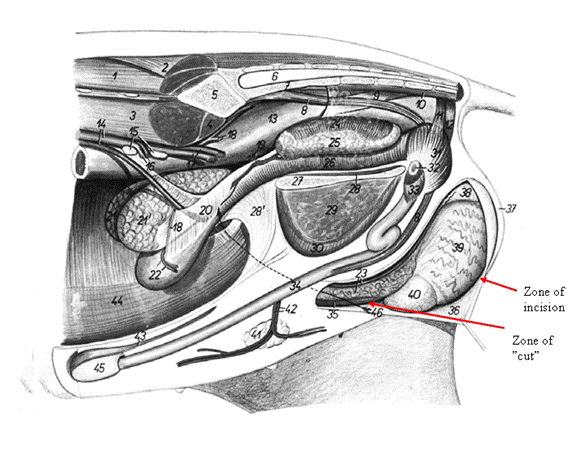Entire Male Pigs
Surgical castration is painful to pigs and therefore the routine castration of male pigs is under discussion in Europe. Boar taint, the unpleasant odour of pork from a small proportion (less than 10%) of entire male pigs, is the main reason that is preventing the production of entire male pigs (Střier, 2010). The unpleasant odour is to a great extent affected by the presence of malodorous compounds like androstenone and skatole, which are stored in the fat tissue of some mature pigs. Other substances may also contribute. Boar taint is released when the fat on the carcass is heated. Across Europe, the majority of male piglets are therefore surgically castrated shortly after birth to avoid potential consumer rejection of meat because of boar taint. A very small proportion of female and castrated male pigs can accumulate skatole and develop an unpleasant odour. In the US the term "boar taint" is seldom used - it is called "sex odour".
Castration without any anaesthetics may be legally performed in European countries, with some exceptions (Switzerland and Norway). Economic advantages associated with the production of entire male pigs were demonstrated in the 1980s but in recent years consumer concerns for animal welfare have increased the pressure to find alternatives to castration.

Figure 1. Anatomy of the genital tract of male piglets and localization of incision during surgical castration (Adapted from Popesko, 1980).
Definition: Androstenone
Androstenone is a pheromone - a compound that is produced in the testis. Although offensive to the human sense of smell, in small amounts, its odour is hardly detectable by most people. However, their ability to detect the odour varies greatly, the tendency being for sensitivity to decrease with increasing age of the person. The smell is described as urine-like. Women are reported to be more sensitive to androstenone that men. Interestingly, a small proportion (8%) of highly sensitive consumers finds the odour of androstenone pleasant.
The chemical compound is 5α-androst-16-en-3-one (Patterson, 1968).
Definition: Skatole
Skatole is a compound that is developed by degradation of the amino acid tryptophan. The smell of skatole is related to manure. Almost every consumer is sensitive to skatole.
The chemical compound is 3-methylindole (Vold, 1970; Walstra and Maarse, 1970).